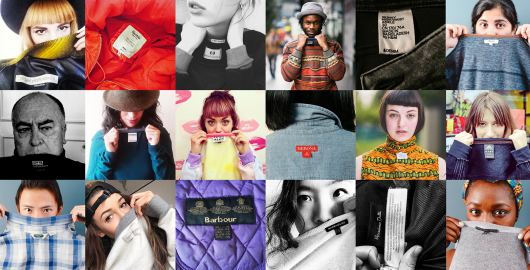WHO MADE MY CLOTHES?

“Chi ha fatto i miei vestiti?”. Con questo slogan si è celebrato nei giorni scorsi il “Fashion revolution day“, una manifestazione kermesse a favore della moda etica che il 24 aprile, ha voluto ricordare come sempre la strage del Rana Plaza in Bangladesh. Un complesso produttivo che nel 2013 crollò seppellendo oltre mille persone prevalentemente sartine che vi lavoravano all’interno, intente a produrre abiti per il mondo occidentale. Dopo molto dibattito, una proposta: spingere la gente ad aderire al movimento ‘chi ha fatto i miei vestiti?’ indossando gli abiti a rovescio per mostrarne l’etichetta e poi chiedere attraverso i social ai produttori da chi provengano jeans, T-shirt, cappotti, giacche. O, (perché no?) eleganti abiti da sera. Si tratta di una provocazione che ha un suo perché, portata avanti da chi non vuole più premiare chi fa cucire i vestiti in Estremo Oriente a prezzi da fame e poi non lo dichiara nell’etichetta. Di fatto è una giustificata richiesta di trasparenza che va oltre la semplice domanda, la provocazione elementare. E che rivela come la coscienza del consumatore stia evolvendo piano verso una maggiore consapevolezza del prodotto, un po’come è accaduto con il cibo con l’accresciuta richiesta di prodotti bio e a chilometro 0. Chi mangia sano con un occhio anche alla salute del pianeta (oltreché alla propria) ormai desidera anche un abbigliamento salubre per sé stesso ed etico per la Terra. E non accetta di sovvenzionare lavoro schiavistico o addirittura minorile. Funzionerà? Chi scrive non crede che la protesta spingerà i marchi a dichiarare chi cuce gli abiti e dove ma ritiene che il movimento di opinione li costringerà a produrre prodotto rintracciabili senza timore di figuracce. E a farlo sapere. Non per amore della causa ma del marketing. Ci guadagnerà? É probabile e non irrealistico. Del resto l’insalata bio è più cara di quella comune, no? Figuriamoci le magliette. Luisa Ciuni
“Who made my clothes?”.
This was the slogan of the “Fashion revolution day” of a couple of weeks ago, that this year, as usual, reminded the massacre of Rana Plaza in Bangladesh. A productive complex that in 2013 collapsed burying more than 1000 people, mainly women making clothes for the Occidental world. After a long debate, a proposal: pushing people to support the movement “Who made my clothes?” wearing their clothes inside out to show the label
and then asking, through the social media, to the brands the provenience of jeans, T-shirts, coats, jackets. And (why not?) elegant evening dresses. This is a provocation with a meaning, supported by who doesn’t want to reward anymore who has his clothes sewed in the Far East with very low costs and doesn’t declare it on the label. It’s a justified request of transparency, that reveals how the consumer’s conscience is slowly evolving towards a higher awareness about the products, as it happened for food, with the increasing demand of organic and Km0 products. Who eats healthily, with care for the planet’s health, now requires also a clothing that is wholesome for them and for the Earth too. And doesn’t accept to fund slave or even child labour. Will it work? I don’t think that this protest will push the brands to declare who sewes the clothes and where, but I think that the movement will force them to make traceable products without fear of making a bad impression. And to let others know. Not to serve the cause but for marketing strategy. Will it be lucrative? It’s probable and not unrealistic. After all, the organic salad is more expensive than the normal one. Not to mention the T-shirts. Luisa Ciuni
NESSUN COMMENTO





